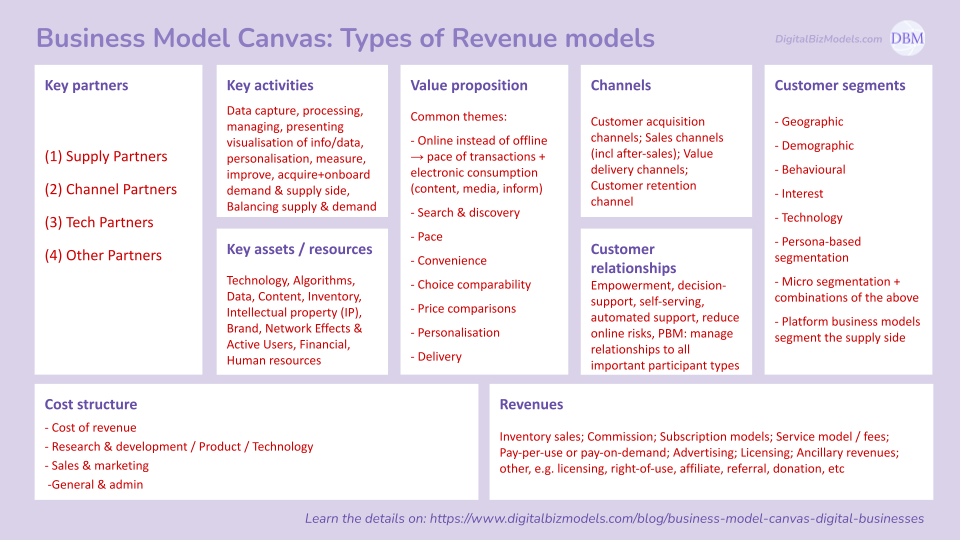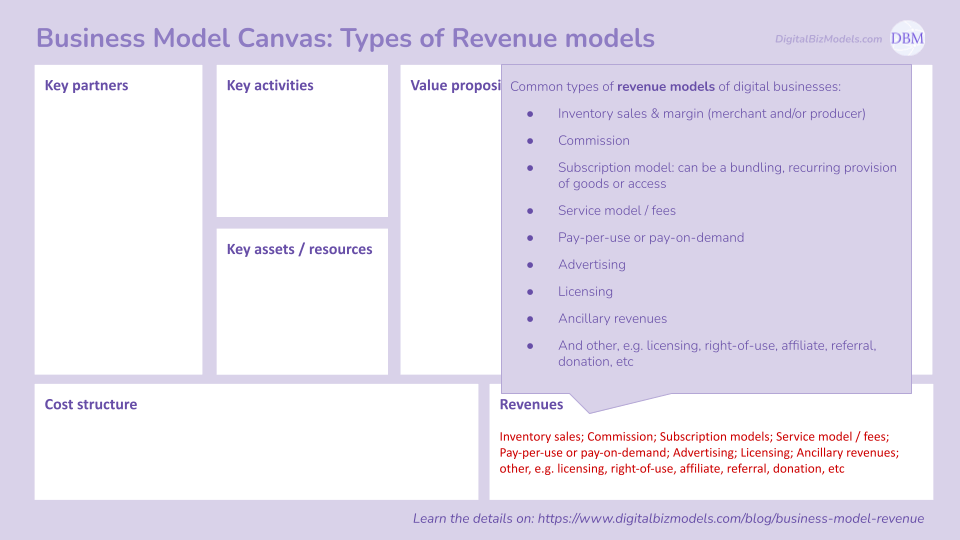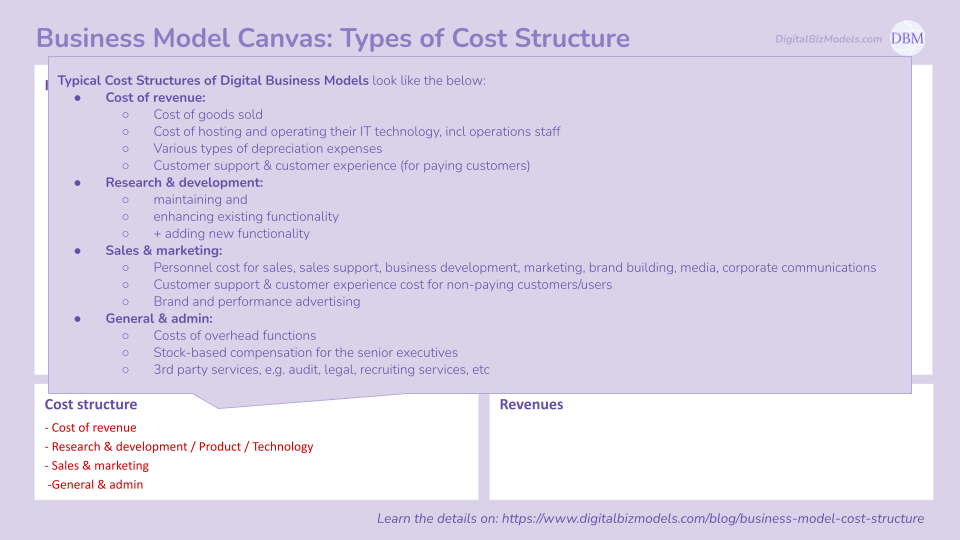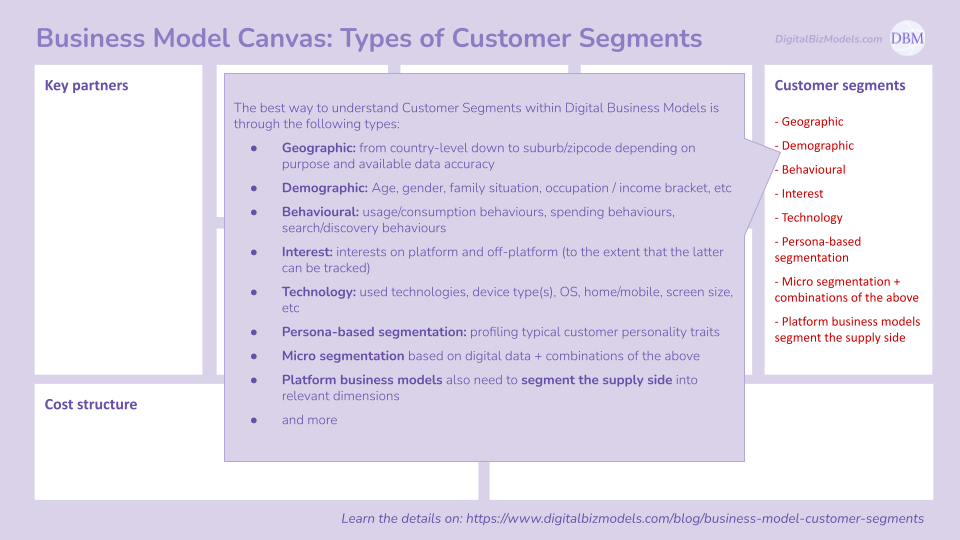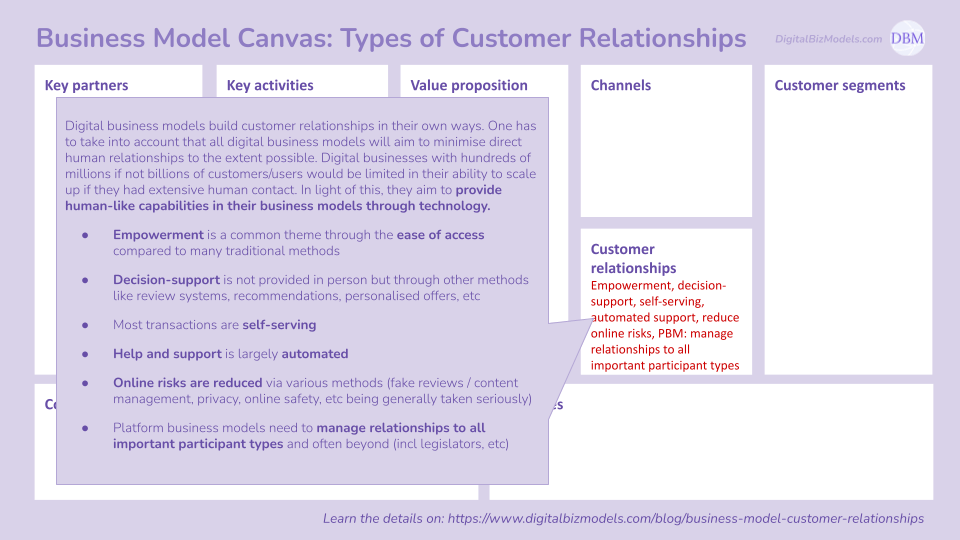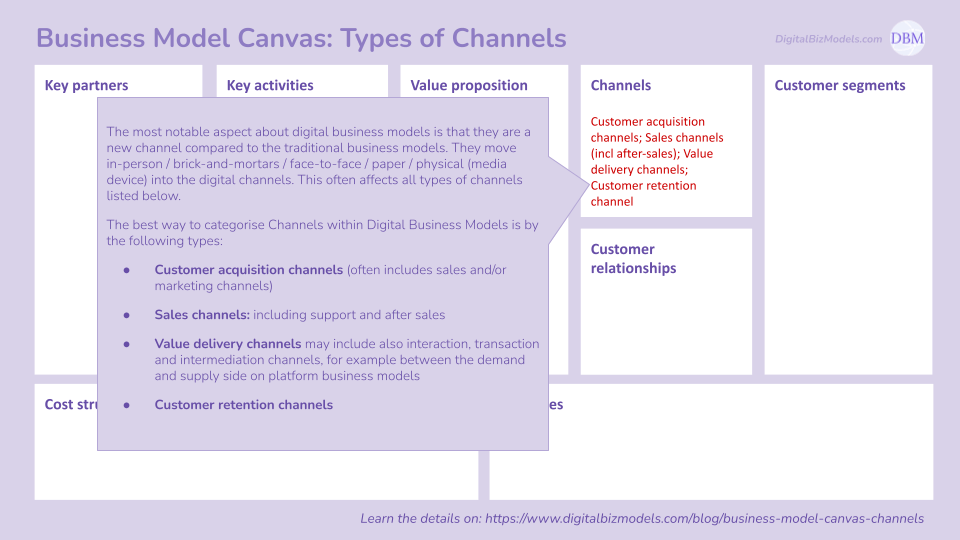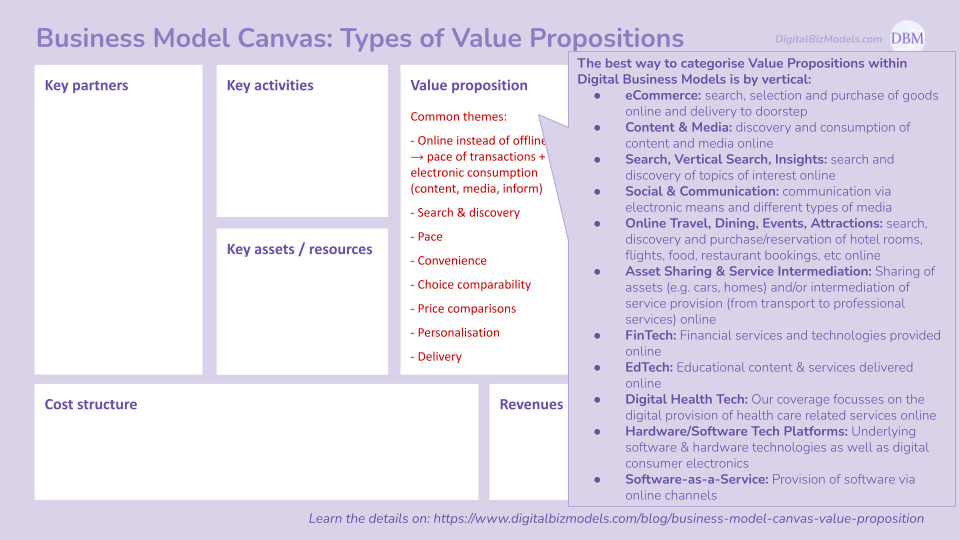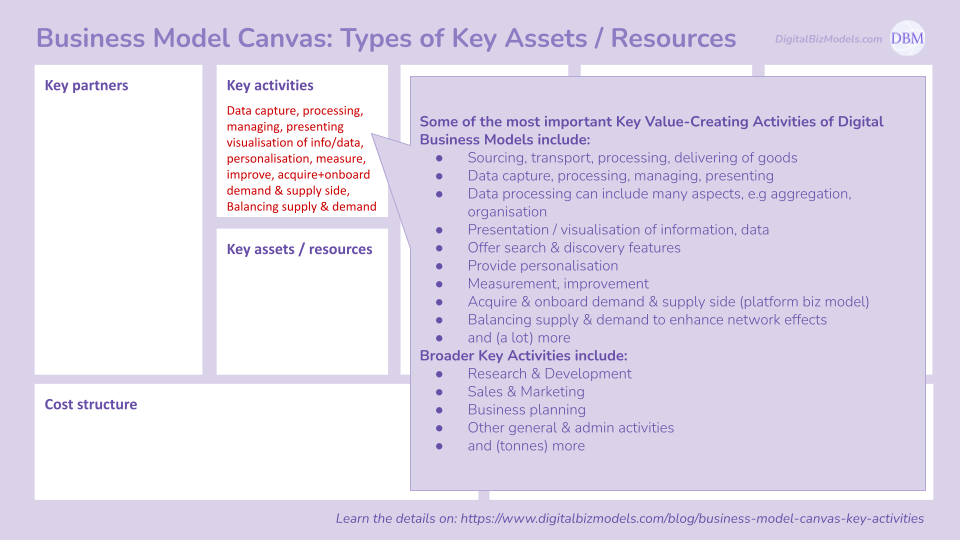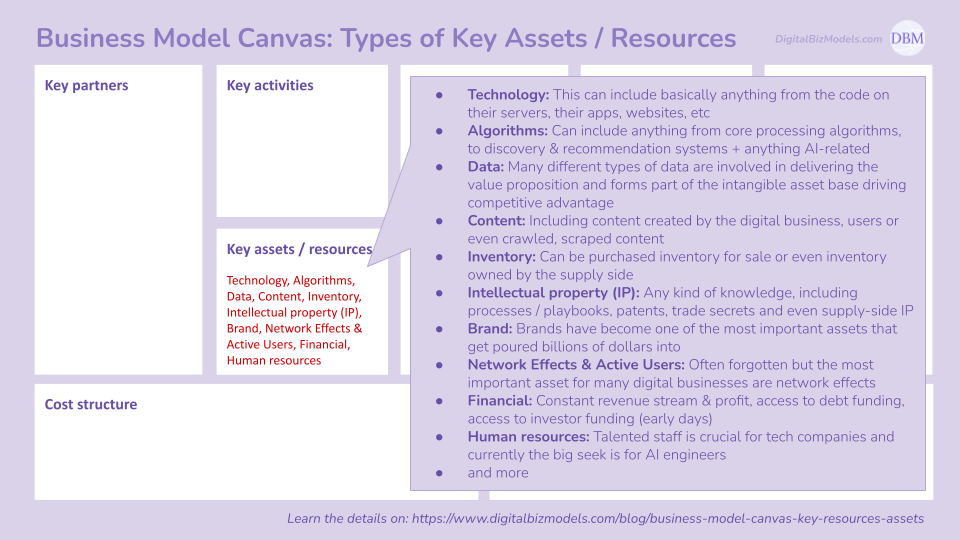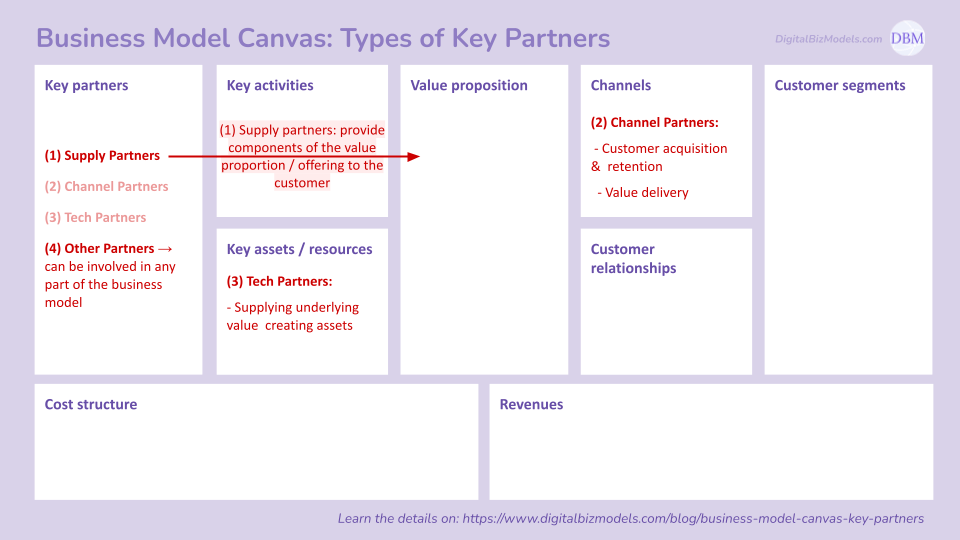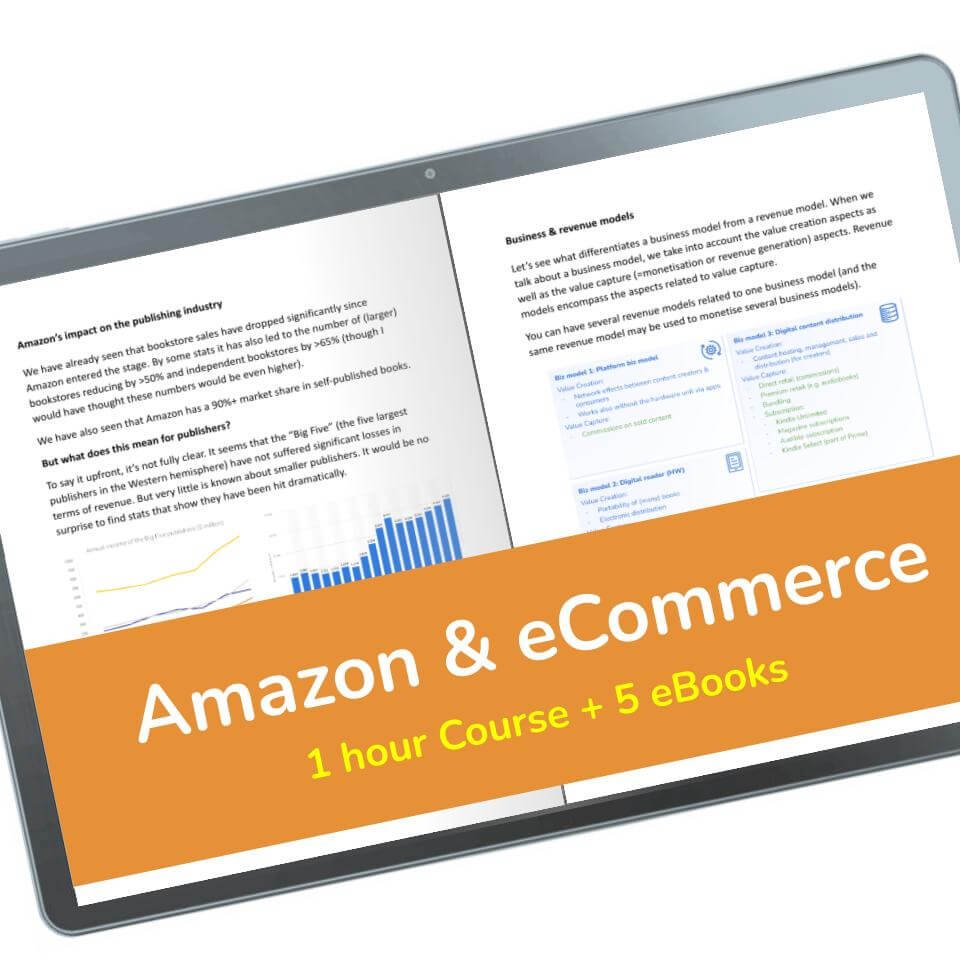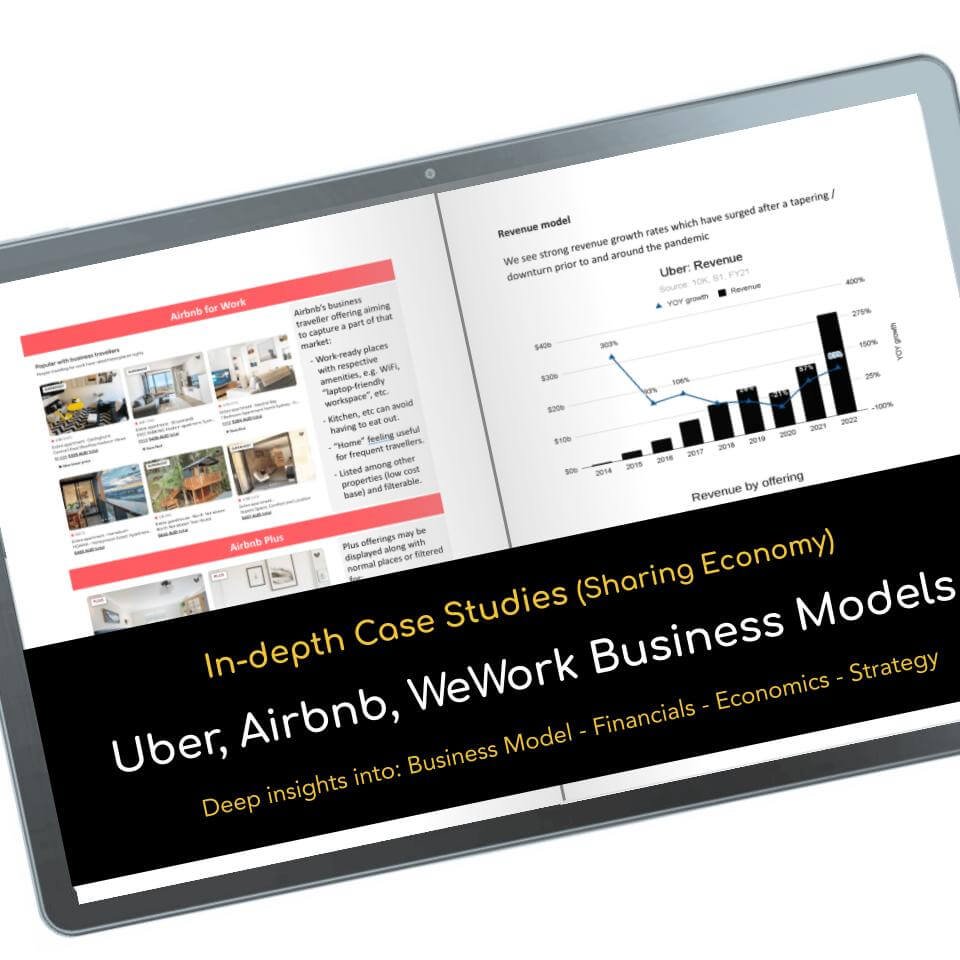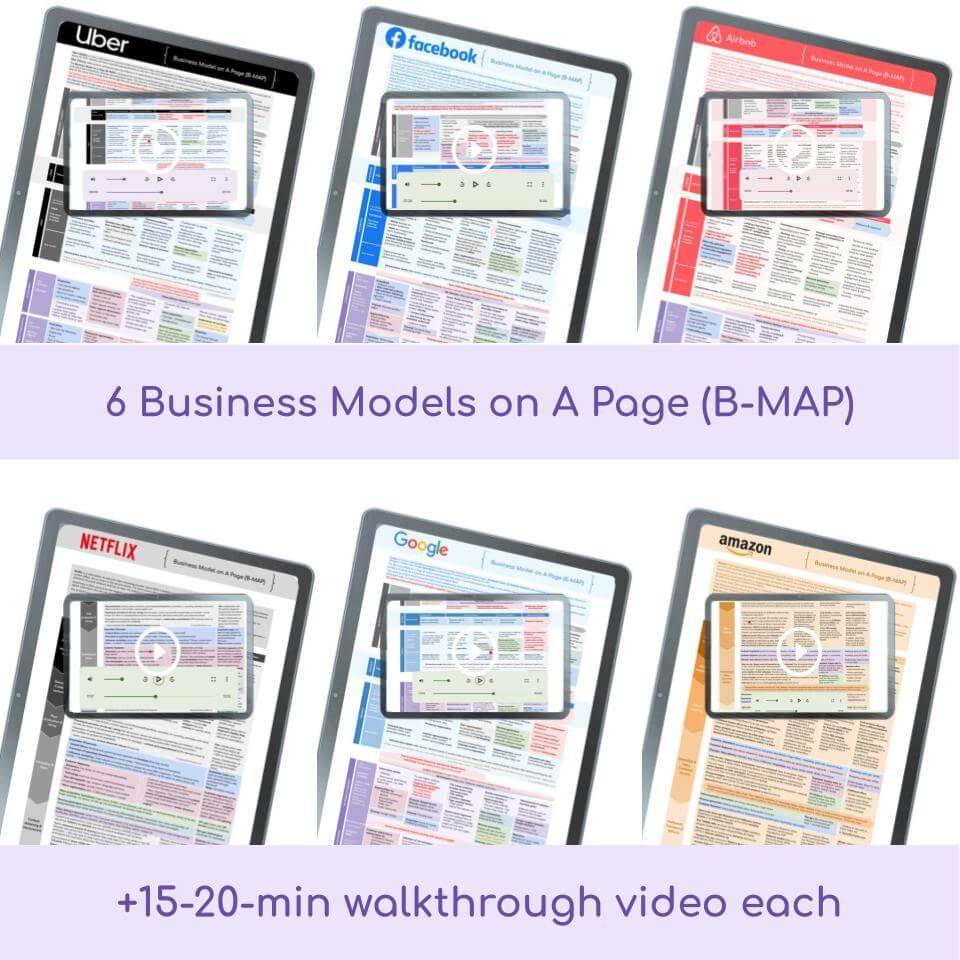Business Model Canvas - Customer Relationships
This article will cover the various types & examples of Customer Relationships tailored to digital business models.
Customer Relationships is one of the sections of the popular Business Model Canvas tool.
The Business Model Canvas was devised by Alex Osterwalder
Typical types of Customer Relationships within digital business models shown in the biz model canvas
(1) Types of Customer Relationships
Digital business models build customer relationships in their own ways. One has to take into account that all digital business models will aim to minimise direct human relationships to the extent possible. Digital businesses with hundreds of millions if not billions of customers/users would be limited in their ability to scale up if they had extensive human contact. In light of this, they aim to provide human-like capabilities in their business models through technology.
The best way to understand Customer Relationships within Digital Business Models is through the following types:
Empowerment is a common theme through the ease of access compared to many traditional methods
Decision-support is not provided in person but through other methods like review systems, recommendations, personalised offers, etc
Most transactions are self-serving
Help and support is largely automated
Online risks are reduced via various methods (fake reviews / content management, privacy, online safety, etc being generally taken seriously)
Platform business models need to manage relationships to all important participant types and often beyond (incl legislators, etc)
(2) Examples of Customer Relationships
Now let’s take a look at examples of Customer Relationship. The best way to do so is - as always - by looking at concrete, vertical-specific examples.
eCommerce
Examples of digital businesses in the eCommerce vertical include Amazon, Etsy, Wayfair and thousands of others.
Customer Relationship examples Amazon:
A big difference between traditional retail and eCommerce is the lack of staff to help with decision making, support, returns, etc. Amazon has some of the following in place instead
Review system
The review system is one of the most important decision and ranking tools
They have a range of community and review guidelines
They allow other users to vote on the helpfulness of reviews and display more helpful ones higher up
Nevertheless, removing fake reviews is an ongoing and difficult task
Recommendations can come in different forms:
"Recommended for you"
"Frequently bought together"
"Your recently viewed items and featured recommendations"
"Your browsing history"
"Related to items you viewed"
"Best selling"
and more
Content & Media
Examples of digital businesses in the Content & Media vertical include Netflix, YouTube, Spotify, Medium, Apple News and many more:
Customer Relationship examples Netflix:
Ability to watch anything on demand and all episodes available at once gives a sense of self-control/empowerment
The recommendation system: provides personalisation
The whole theme, voice and style: entertaining, relaxed, light-touch, friendly
Self-service through App: basically all interactions are managed through the app and website, including help system
User support: via live chat, call or call through the app
Sharing economy
Examples of digital businesses in the Asset & Service Sharing (=Sharing Economy) vertical include Uber, DoorDash, Airbnb among others:
Customer Relationship examples Uber:
As a platform business model Uber has to make sure to take into account its relationships to riders as well as drivers. What’s more they also need to manage their relationships to communities, legislators and regulators
Relationship to riders:
Manage safety risks
Manage bad behaviours (rating system)
Deal with customer issues in an appropriate manner and timeliness
Relationship to drivers:
The platform’s ability to generate income
Acceptable hourly wages + utilisation
Acceptable working conditions (e.g. entitlements, safety net, etc)
Legislators & wider public:
Employment status & conditions of drivers
Safety record
Online Travel
Examples of digital businesses in the Online Travel Agencies (OTA) vertical include Booking.com, TripAdvisor and Expedia:
Customer Relationship examples Booking.com:
Relationships with hotels
The relationship with the hotels is ambivalent. Hotels are unhappy about the amount of commission they have to pay for bookings through the OTAs but have no other choice due to loss of customers to rivals if they dont join
They make sure there is no risk for the hotels (no booking, no fees)
Relationship with travellers
Customer service (two Third of Booking.com employees are in customer services)
Ensure content and reviews are representative of the actual accommodation
Rewards program for remaining loyal
Social Media & Search
Examples of digital businesses in the Social Media vertical includes Meta’s Facebook, Instagram, X. Examples of Search Platforms include Google, Bing and others.
Customer Relationship examples Google:
As a platform business model Google needs to manage their relationships to the key participant types:
To search users:
Empowerment: equal opportunity for search users to obtain information
Reliability: avoiding platform manipulation is taken very importantly
Privacy: Google provides large amounts of control over privacy settings for those that care about it
To website owners:
Opportunity: Being able to reach an unprecedented number of website visitors directly has opened opportunities to many website owners
To advertisers:
Empowerment: even the smallest business can now start with digital advertising within half a day even if they have never done it before
Self-serving: Google Ads are self-serving for advertising of all sizes if desired
Software-as-a-Service:
Examples of digital businesses in the Software-as-a-Service vertical include Salesforce, most Adobe products and hundreds of thousands more cloud-based software products:
Customer Relationship examples productivity SaaS:
SaaS firms support potential customers with resources and their support & success teams (even before they sign up), examples are:
Free, web-based help and educational resources
Communities of users
Customer success teams who support the super users
Critiquing the Biz Model Canvas (Customer Relationships section)
Now that we have covered the Customer Relationship section of the Business Model Canvas (BMC), it’s also time to discuss honestly some shortcomings of the BMC relating to this aspect.
The Customer Relationships section of the BMC book is very high level. Pretty much everything within digital business models would fall under their category “automated services”. This is (somewhat) understandable as the BMC is aiming to please all business models from all industries. With our focus on digital business models only, we have been able to provide a far more specific list of Customer Relationship aspects with many relevant examples that can be transferred to other digital business models.
We hope you enjoyed our coverage of Customer Relationships including the differentiation of different types and the extensive list of examples relevant for Digital Business Models.
What we like more than the Business Model Canvas: the B-MAP
We have used the business model canvas for almost 10 years on a very regular basis and to cover many dozen companies. Over time, we have realised that it has its limitations.
That is why we have decided to use a presentation format based on the time-tested Value Chain method devised by Strategy Professor Michael Porter. It is a far better way to grasp key aspects of a digital business model than the canvas.
Prof Porter is the most cited scholar on competitive strategy and digital transformation (with almost 10x more citations than the respectively 2nd ranking scholar).
Our Business Model on A Page (B-MAP) is specifically developed for digital business models and based on the Value Chain.
We have decided to price our B-MAPs super-affordably to give everyone (including our many valued followers from lower-income countries) the opportunity to get kick-started on their innovation journey with this high value resource that includes a B-MAP + walk through video for each of the digital companies that are covered!


